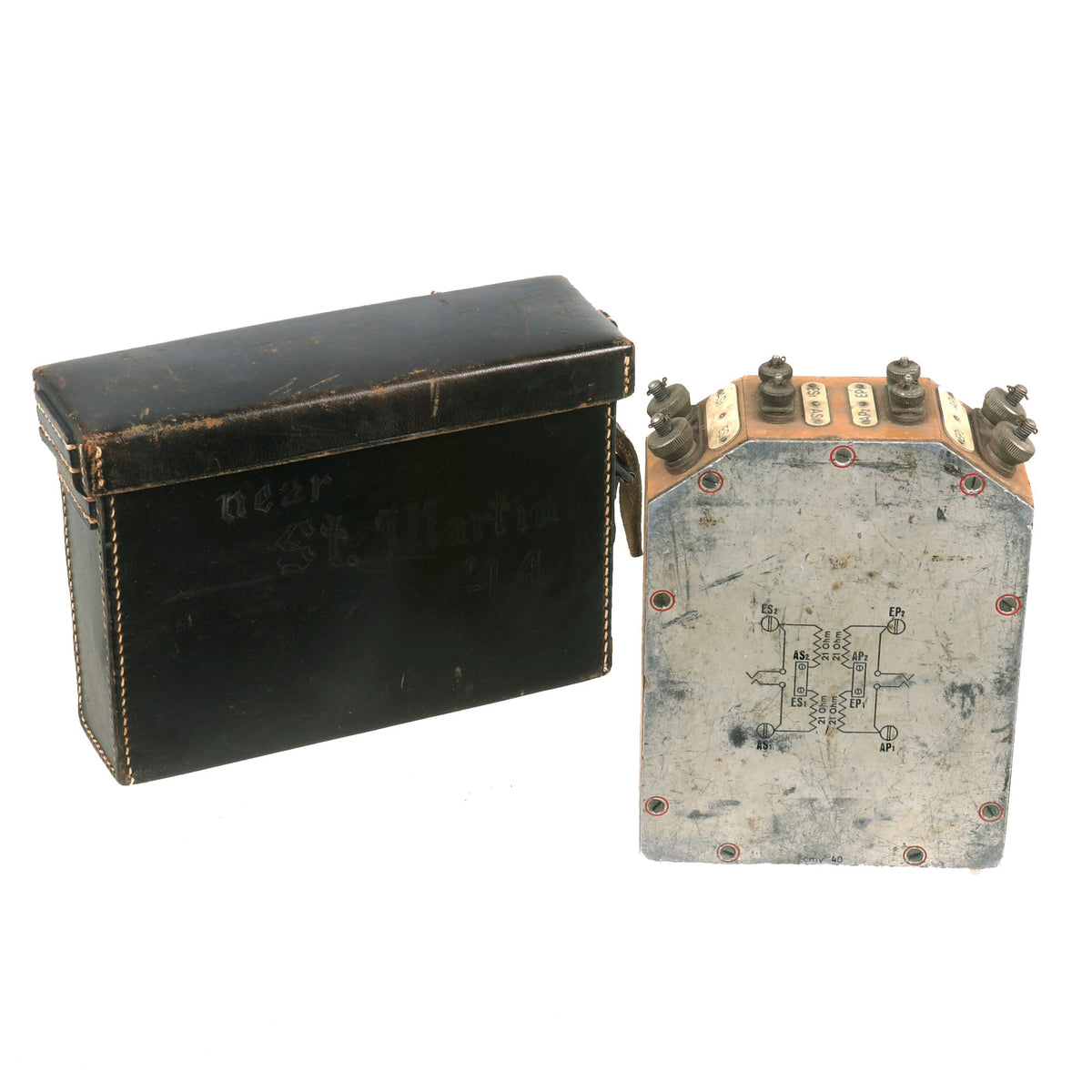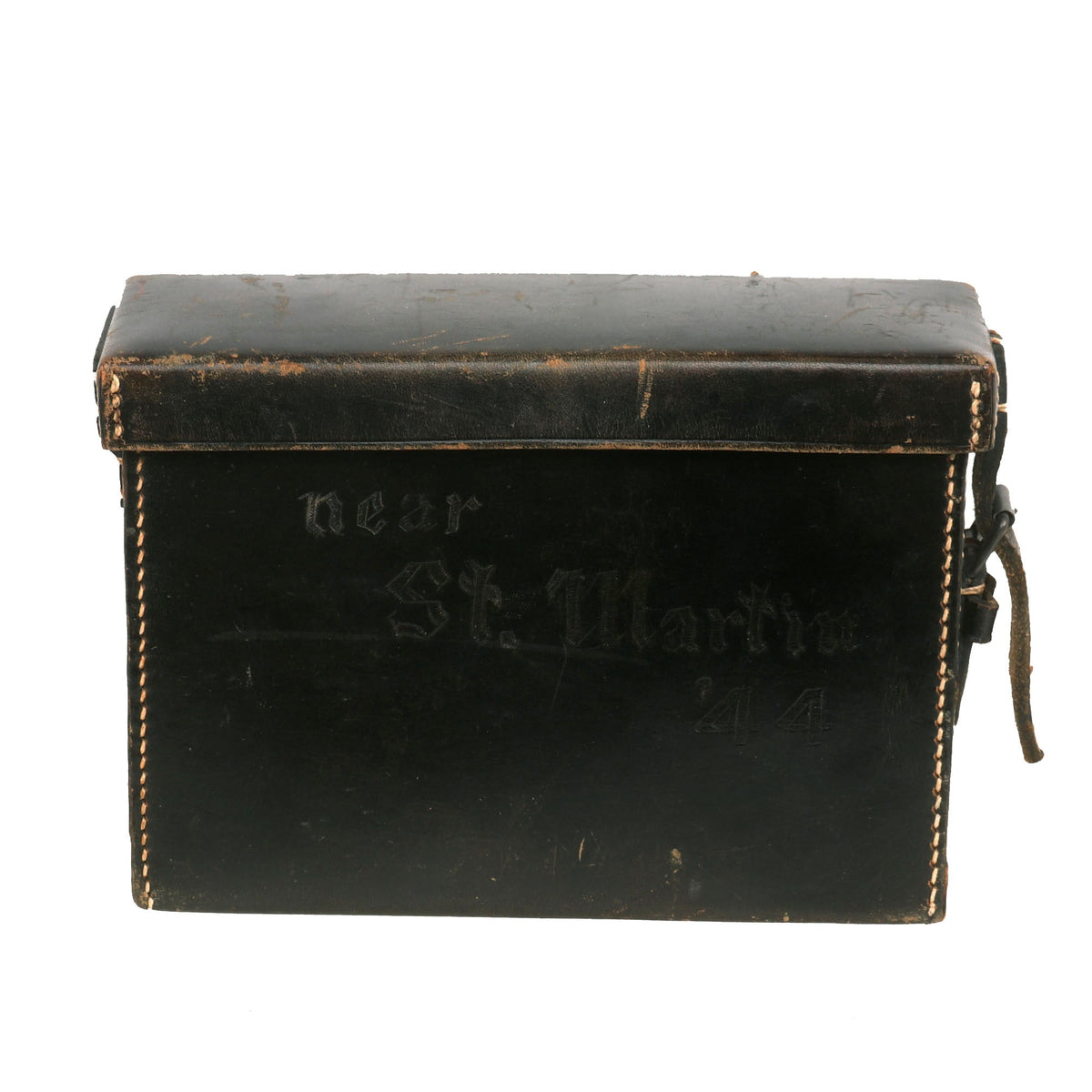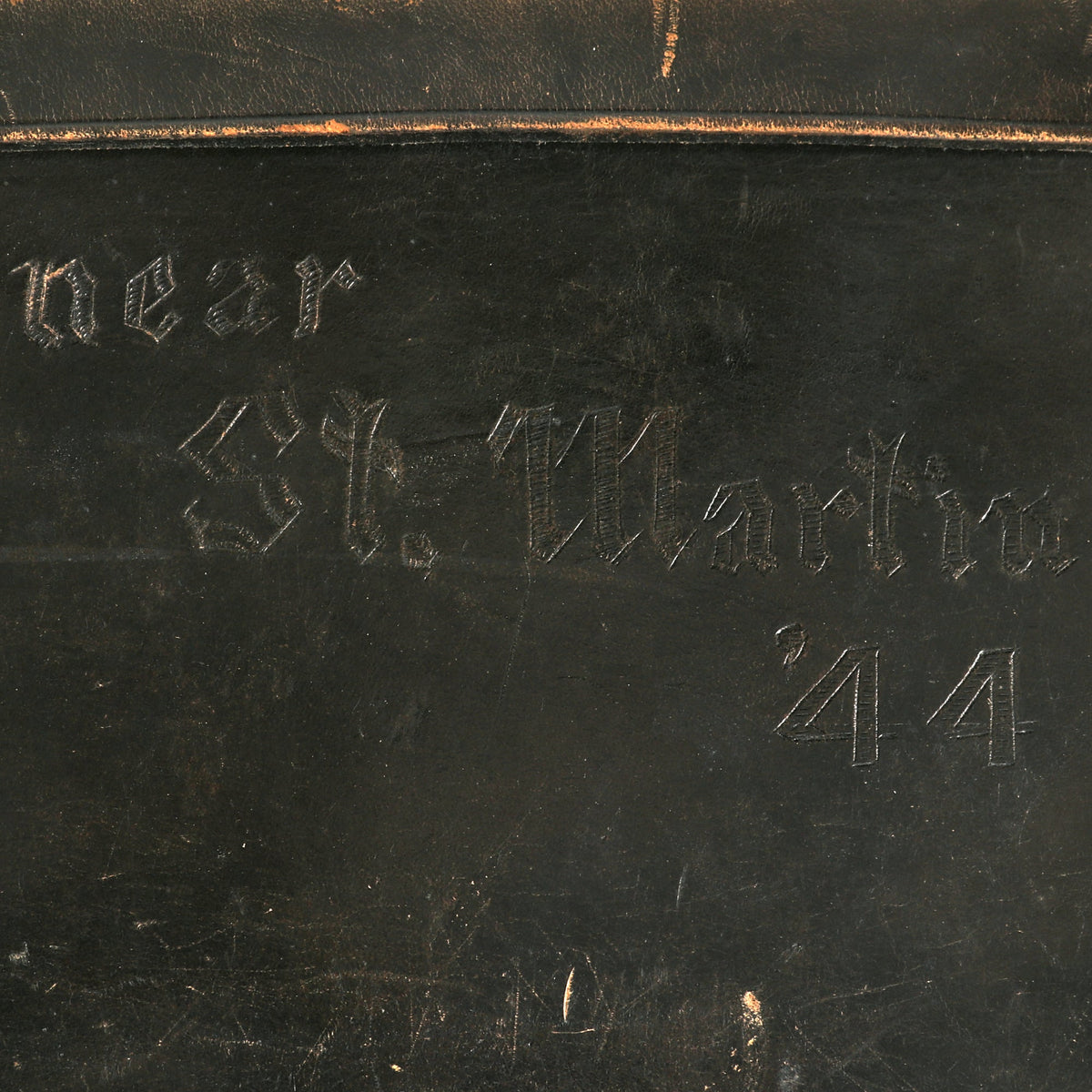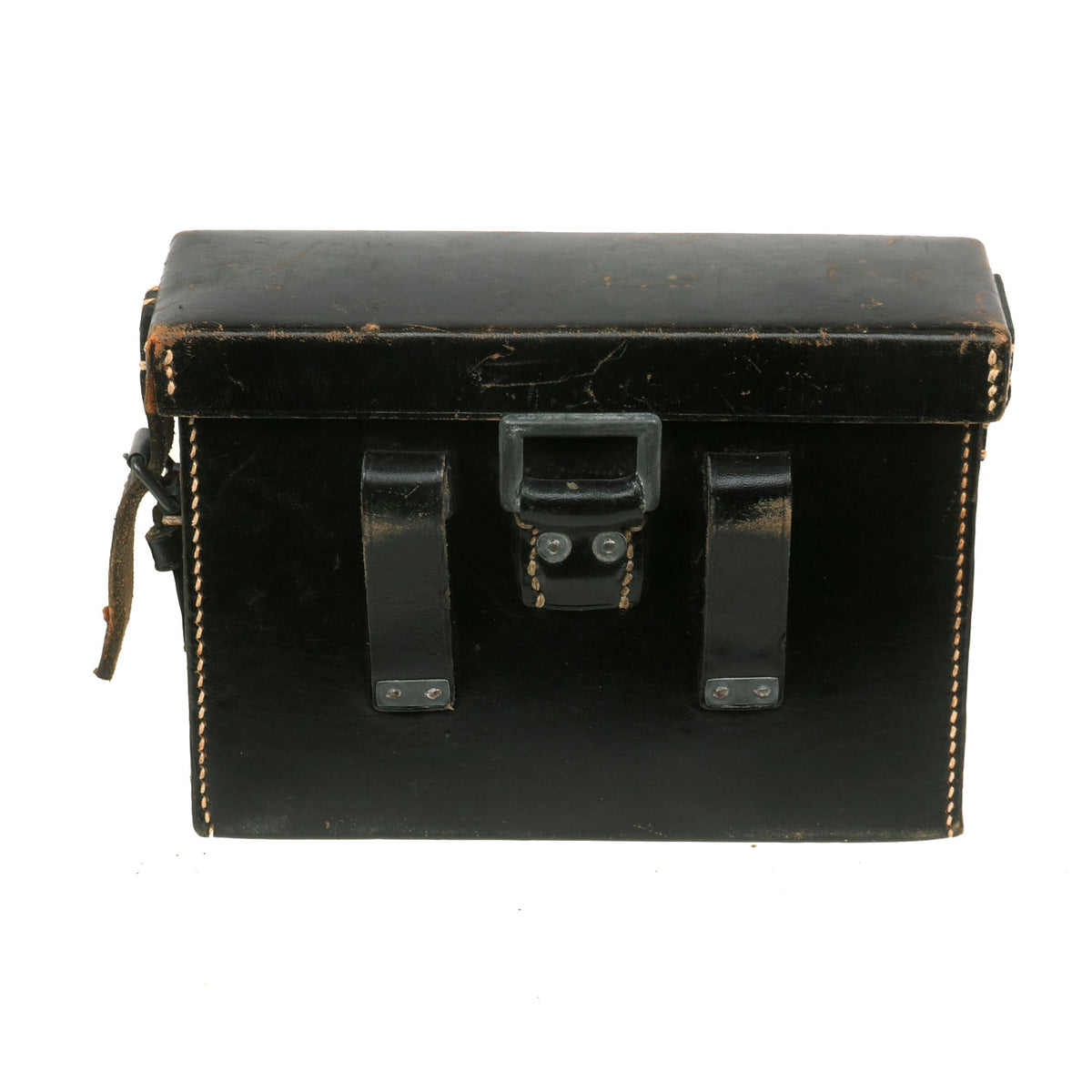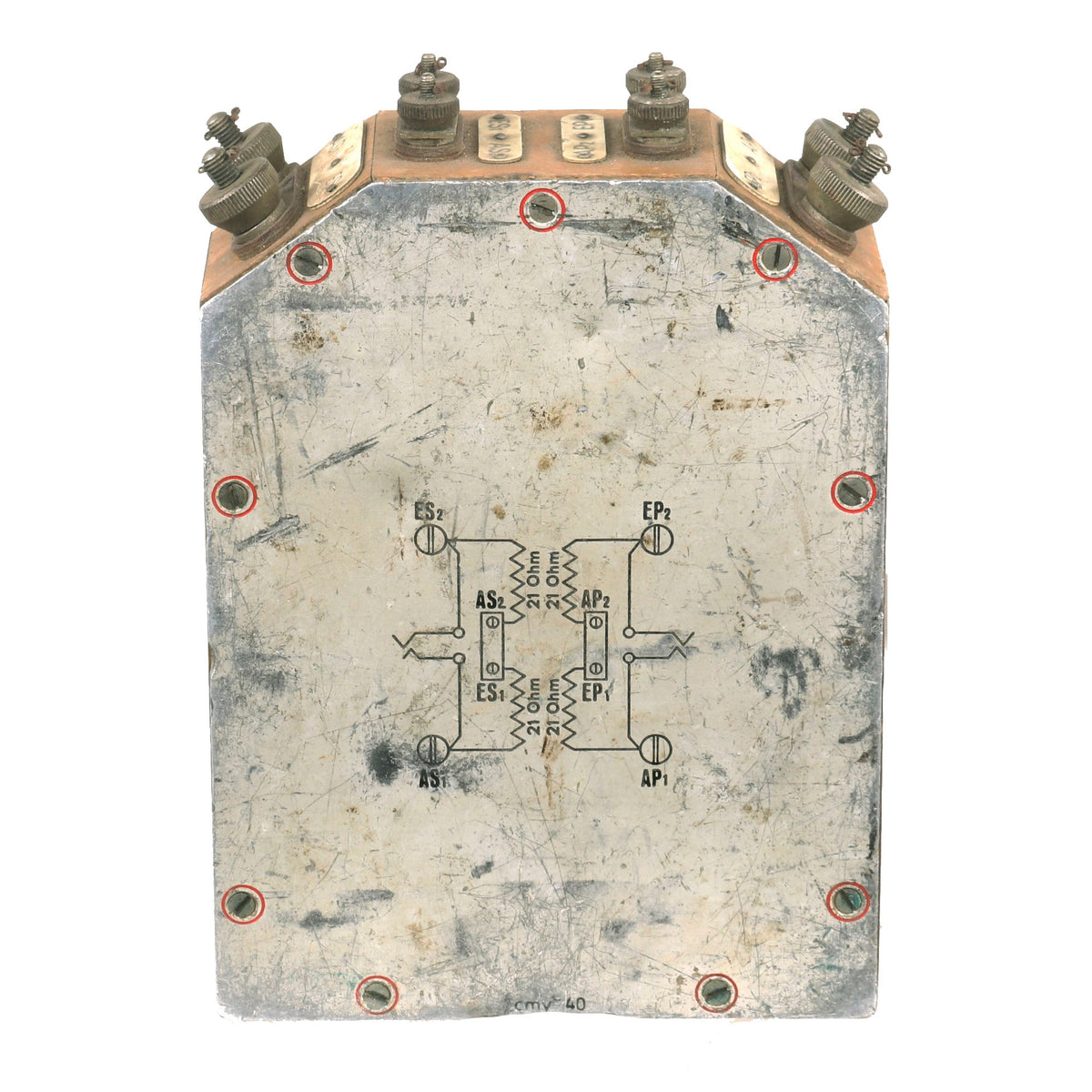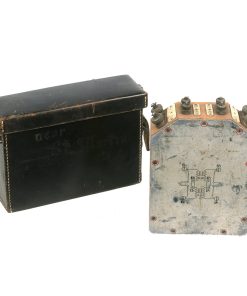Original German WWII FF33 Field Telephone Transformer Junction Box by Rudolph Krüger in Leather Case – Allied Bring Back Original Items
$ 295,00 $ 118,00
Original Item: Only One Available. The feldfernsprecher (field telephone) 33 (FF33) was the standard field telephone of the German military forces of WWII. It is a general purpose field telephone designed for wired communications. It was introduced in 1933 as a modern replacement for the previous WWI legacy field telephones the last of the series being the feldfernsprecher 26 (1926). The FF33 can also be connected to the Torn. Fu. D2 and Torn. Fu. Bl, and F series radio sets to act as a remote handset.
These could be set up in any number of ways, using just two FF33 units, or many more. However to do this additional equipment was needed, such as this very nice Überträger für Feldtelefon (transmitter for field telephone), which is a device for field phones to convert between single and double line connections, a definite necessity for more complex networks. It measures approximately 4 3/4″W x x 7″H x 2″, and comes complete with it’s original black leather carrier, designed to be worn on a belt with a ring on the back for Y-straps.
The unit is marked with German three letter code and date cmy 40, for 1940 manufacture by Rudolph Krüger of Berlin. They were a known manufacturer of telegraph equipment, morse code keys, and similar apparatus. It looks to be complete, but we have no way of knowing if it is functional or not. It definitely shows wear from use in the field.
The leather case is in a bit better shape, still retaining most of the black finish on the leather, with the white stitching still relatively vibrant. This was picked up by a USGI during the war, and they marked on the front where it was found:
near
St. Martin
’44
We believe this is a reference to Saint-Martin-de-Fontenay, which was reached by Allied forces on July 20 as part of Operation Atlantic, part of the larger D-Day invasion, but it was not able to be captured until Operation Spring about a week later. Canadian forces were responsible for both operations. Unfortunately with no further information, we cannot tell if it was captured by a Canadian during one of these operations, or whether it was picked up by forces after it was already captured.
All in all a lovely bring back item from the second world war, ready to research and display!
Fast Shipping with Professional Packaging
Thanks to our longstanding association with UPS FedEx DHL, and other major international carriers, we are able to provide a range of shipping options. Our warehouse staff is expertly trained and will wrap your products according to our exact and precise specifications. Prior to shipping, your goods will be thoroughly examined and securely secured. We ship to thousands clients each day across multiple countries. This shows how we're dedicated to be the largest retailer on the internet. Warehouses and distribution centres can be located throughout Europe as well as the USA.
Note: Orders with more than one item will be assigned a processing date depending on the item.
Before shipping before shipping, we'll conduct a thorough inspection of the items you have ordered. Today, the majority of orders will be delivered within 48 hours. The delivery time will be between 3-7 days.
Returns
The stock is dynamic and we cannot completely manage it because multiple stakeholders are involved, including our factory and warehouse. So the actual stock may alter at any time. It's possible that you may not receive your order once the order has been made.
Our policy is valid for a period of 30 days. If you don't receive the product within 30 days, we are not able to issue a refund or an exchange.
You can only return an item if it is unused and in the same state as the day you received it. You must have the item in its original packaging.
Related products
Uncategorized
Uncategorized
Uncategorized
Uncategorized
Uncategorized
Uncategorized
Uncategorized
Band of Brothers ORIGINAL GERMAN WWII Le. F.H. 18 10.5cm ARTILLERY PIECE Original Items
Uncategorized
Uncategorized
Uncategorized
Uncategorized
Uncategorized
Uncategorized
Uncategorized
Uncategorized
Uncategorized
Armoured Fighting Vehicles of the World: AFVs of World War One (Hardcover Book) New Made Items
Uncategorized
Uncategorized
Angolan Rebel 1970s era 60mm Inert Display Mortar from Angolan Civil War Original Items
